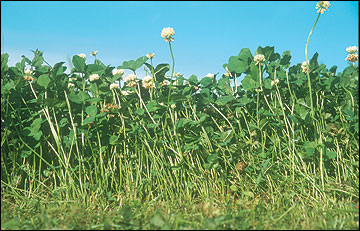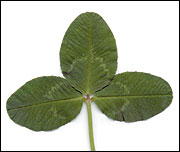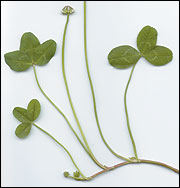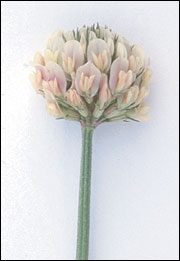White clover (Trifolium repens L.)
Legumes
White clover is a legume adapted to cool, moist climates. In Missouri, it is presently grown on about 8 million acres of pastureland in combination with perennial cool-season grasses. Like other legumes, the forage it provides is both palatable and nutritious. All cattle relish white clover but have a tendency to overgraze it in mixed pastures. A rotational grazing system helps manage this problem. White clover has good tolerance to poorly drained soils, but it is not drought-tolerant. In addition, white clover causes cattle to bloat if used as the only forage in the diet. Because of its high forage quality, white clover has wide application in grazing systems.
 White clover
White clover
 Yield distribution of white clover in Missouri.
Yield distribution of white clover in Missouri.
- Origin: Mediterranean
- Adaptation to Missouri: Statewide
- Growth habit: Prostrate, stoloniferous, perennial.
- Leaf: Palmately trifoliolate, glabrous, arise from stolons on long petioles. Leaflets are ovate or circular with minutely serrate margins, often have V-shaped white mark, underside is shiny.
- Stems: Prostrate, glabrous, solid, and develop stolons.
- Stipules: Oblong to lanceolate, pale and translucent with a short point.
- Flowers: Formed at the end of long peduncles. Florets are white, often tinged pink, forming an almost spherical head.
- Fertilization: No N needed if nodulated. Maintain 30 lb P/acre and 250 lb K/acre.
- Timing of production: 70 percent of annual production between April 1 and June 30.
- When to begin grazing: Often based on the height of the grass in the mixture. Few if any pure stands exist.
- When to cut for hay: Not normally cut for hay unless mixed with a companion grass. Harvest based on the maturity of the grass.
- Lowest cutting or grazing height: 3 inches
- Fall management: Avoid severe grazing from Sept. 15 until the first hard killing frost.


